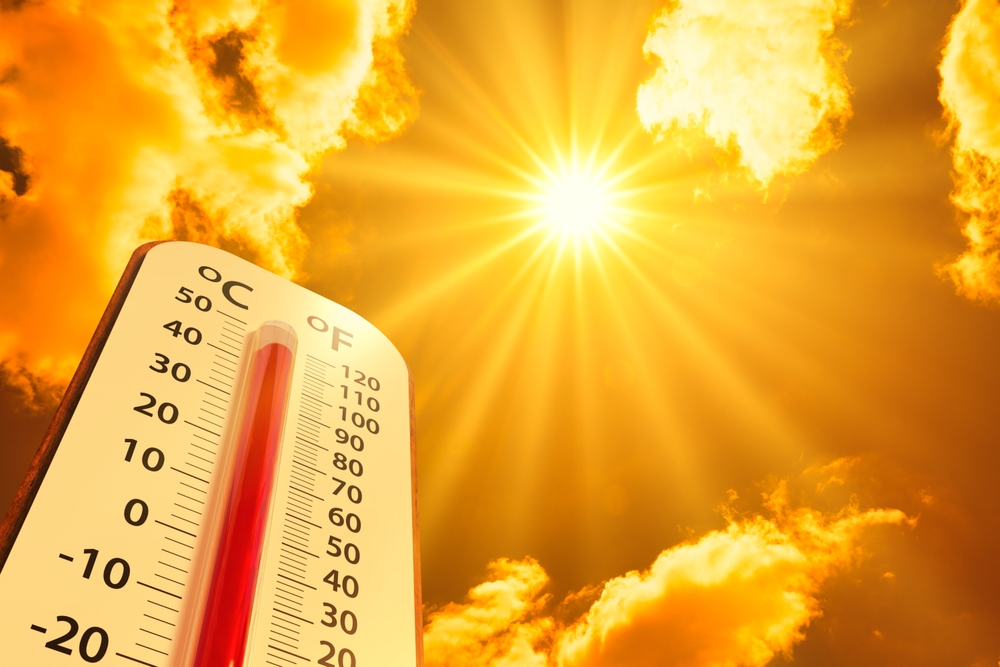This current heat wave has put considerable stress on our crops. Under stress, crops become less efficient in processing nutrients as their metabolism (photosynthesis, respiration, and the synthesis and degradation of organic compounds) slows down.
Higher nighttime temperatures are especially concerning. It has been known since 1939 (Laude, et al.) that plants’ response to heat stress fluctuates between day and night – if you apply heat stress to a plant during the middle of the day, it is much more likely to survive than if you applied the same heat stress at night. Plants’ daily cycle of heat resistance is a strategy that protects plants from the hottest parts of the day while saving energy at night.
Plants sense temperature and then use this information to activate chemical pathways to protect themselves by, among other things, manufacturing protective heat shock proteins (HSP). We’ve learned that these HSPs are activated by light, which is why high nighttime temperatures can have such a devasting impact on crops. Plants lose their heat resistance capability in darkness and will only regain protection when the light returns.
When plants are exposed to biotic and abiotic environmental stresses like drought and elevated temperatures, they also produce reactive oxygen species (ROS) in response. This is problematic as these excited ROS molecules cause the oxidation of different cellular biomolecules such as nucleic acids, proteins, and lipids and eventually destroy the cellular structure. Simply put, the plant begins to break down.
When plants start to accumulate ROS, they respond by producing significant secondary metabolites to counterbalance the breakdown. Phytohormones, phenolic compounds, anthocyanins, and some other pigment molecules are categorized as secondary metabolites. Secondary metabolites are organic compounds that are not primarily involved in plant development but are a key part of the plant’s natural defense system.
When a plant diverts energy to the production of secondary metabolites, it’s diverting resources away from fruit production and growth. So the plant declines from a combination of metabolic slowing and the diversion of energy.
There are options. One is supplementing plant phenols. The plant can use these phenols to its favor by expending less energy in its production and maintaining the manufacturing of primary metabolites.
Another option is flavonoids. They have the potential to assist plants in tolerating, resisting, and escaping biotic and abiotic stresses from the external environment. Flavonoids help regulate stomatal closure that can shut down the plant’s metabolism early in abiotic stress conditions, inhibiting CO2 absorption and photosynthesis, which in turn limits the energy available to grow the plant or ripen the fruit.
CropBioLife, a flavonoid product made from the rind of oranges and imported from Australia where it has a long history of application, is a breakthrough product. Plants easily synthesize CropBioLife to augment their own flavonoid production. We’ve also seen CropBioLife increase the brix levels in plants and fruit and anthocyanin productions.
In addition, we have a product called Coriphol that is full liquid full of phenols, organic acids, carbon, and other useful compounds, from a bio-refinery process of producing biochar. As mentioned, these secondary metabolites are critical to plant health, especially at high-stress levels.
Both products have proved to be extremely helpful to crops experiencing high heat stress. While both can be applied by foliar spray, the Coriphol can also be applied by drip. We see a vast improvement in various crops’ ability to withstand long heat stress periods, including less breakdown and fruit decline. I can share more data if you’re interested.





